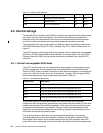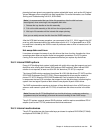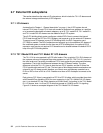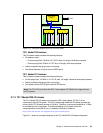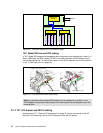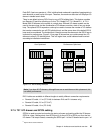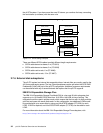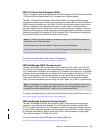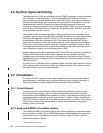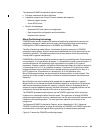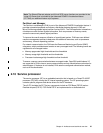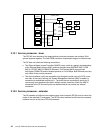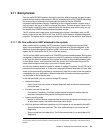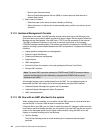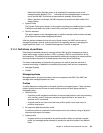
38 p5-570 Technical Overview and Introduction
2.8 Dynamic logical partitioning
The logical partition (LPAR) was introduced with the POWER4 processor product line and the
AIX 5L Version 5.1 operating system. The technology offered the capability to divide a
pSeries system into separate systems, where each LPAR runs an operating environment on
dedicated attached devices, such as processors, memory, and I/O components. Customers
requested system flexibility to change the system topology on demand, and this was
achieved by modifying the system layout on the required HMC. Global or individual changes
take part on all involved partitions to redefine the new partition layout. Therefore, a reboot of
one or more partitions was required.
Later, dynamic LPAR increased the flexibility, enabling selected system resources such as
processors, memory, and I/O components to be added and deleted from dedicated partitions
while they were executing. Therefore, AIX 5L V5.2 with all necessary enhancements to
enable dynamic LPAR was introduced in 2002. This required an attached HMC with the
proper level of software to control the system resources, and an updated system firmware
level to electronically isolate systems resources. The ability to reconfigure dynamic LPARs
encourages system administrators to dynamically redefine all available system resources to
reach the optimum capacity for each defined dynamic LPAR.
Dynamic logical partitioning is supported by AIX 5L for POWER V5.2 and later. Its support by
SUSE LINUX Enterprise Server 9 and later is planned, but with reduced functionality
(changing memory attributes dynamically is not supported, at the time of writing). Dynamic
logical partitioning is not supported by the current version of Red Hat Enterprise Linux AS for
POWER Version 3.
On the p5-570, the USB devices are considered a group, as are the slimline devices. Devices
within a group must be moved from partition to partition as a group. Other devices, such as
individual I/O slots, can be relocated individually.
2.9 Virtualization
On the p5-570 server, logical partitions requiring dedicated resources may now be able to
take advantage of a new technology that allows resources to be virtualized, allowing for a
better overall balance of global system resources and their effective utilization.
2.9.1 Virtual Ethernet
To enhance communication between partitions (dedicated partitions or partitions using
Micro-Partitioning technology), the Virtual Ethernet implementation enables in-memory
connections at a high bandwidth from partition to partition. Virtual Ethernet working on LAN
technology enables a transmission speed in the range of 1 GBps to 3 GBps, depending on
the MTU
6
size, and it supports 256 Virtual Ethernet connections in a partition, where a single
Virtual Ethernet resource can be connected to another Virtual Ethernet, a real network
adapter, or both in a partition.
2.9.2 Advanced POWER Virtualization feature
The Advanced POWER Virtualization feature is an optional additional cost hardware feature
that is available on all IBM Sserver POWER5 processor-based systems. Each system has a
unique feature code for this feature. For the p5-570 server, select FC 7942 to order the
Advanced Virtualization feature.
6
Maximum Transmission Unit



